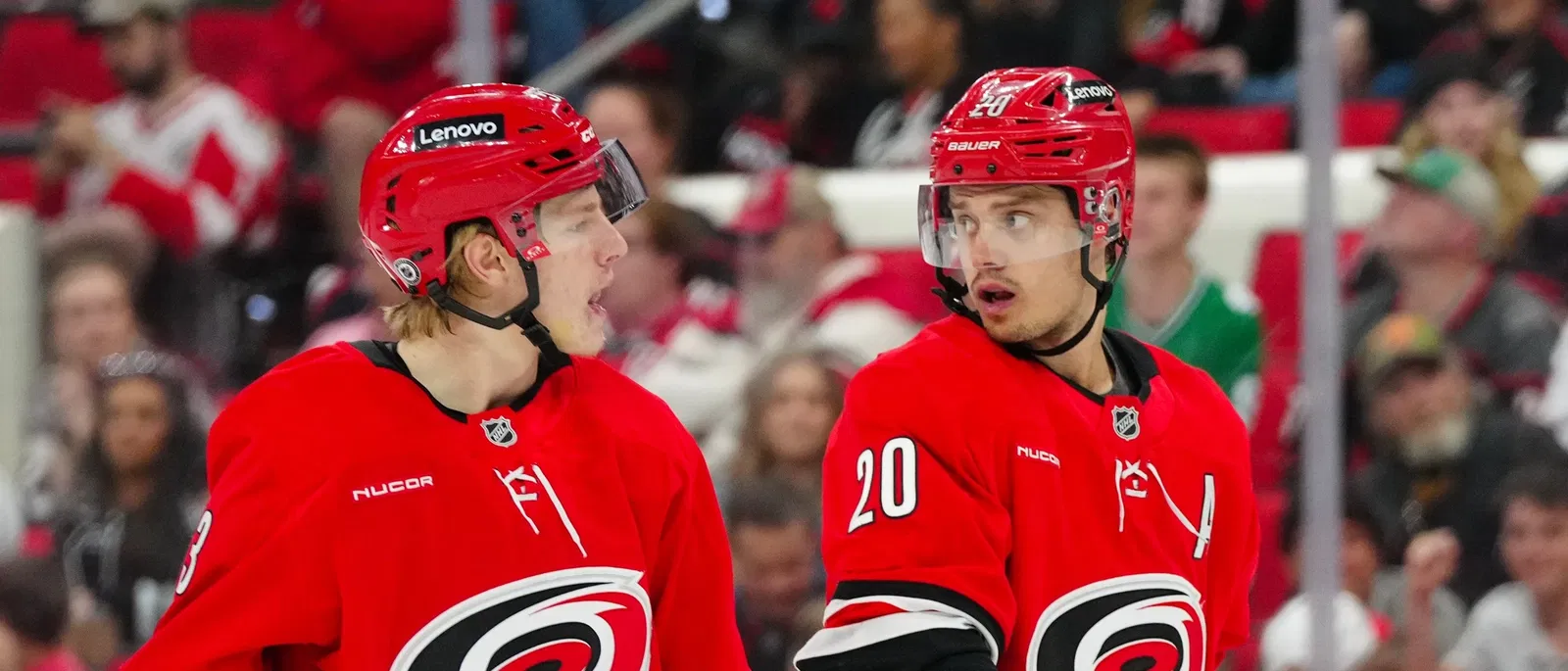
For a few years now, the Carolina Hurricanes have been one of the sexy picks to win the Stanley Cup. Pundits, fans and hockey executives see Carolina as a team with a terrific core – and clearly, Hurricanes management feels the same way.
On Thursday night, Carolina GM Eric Tulsky signed Jackson Blake to an eight-year, $40.92-million contract extension. On Friday, the Hurricanes’ social media team tweeted all seven of Carolina’s players who are under contract through the 2030-31 season – a number that is the highest in the NHL through that time frame.
The Hurricanes narrowly lead the Vancouver Canucks and Florida Panthers, which have six players signed through 2030-31. The Washington Capitals have five players signed for that long.
This negotiating tactic is essentially a gamble by Tulsky on his core talent, and the same goes for Canucks GM Patrik Allvin, Panthers GM Bill Zito and Capitals GM Chris Patrick. There may come a time when one or more of these GMs part ways with some of the players they’ve currently signed to long-term extensions, but in these early stages of those contracts, you want players to feel secure and focused solely on playing as well as they can. And you don’t arrive at that goal if players are constantly signed to one- or two-year deals.
The Hurricanes have handed out contracts with significant term on them. While Blake is only 21, Carolina has other youngsters under long-term contracts, including star forwards Seth Jarvis (23), Logan Stankoven (22) and right winger Andrei Svechnikov (25). But there are more experienced players also under long-term deals with the Hurricanes: star center Sebastian Aho, newcomer left winger Nikolaj Ehlers, shutdown blueliner Jaccob Slavin and newcomer defenseman K’Andre Miller all are under contract through at least ’30-31.
Tulsky has also handed out some sort of no-move or no-trade clauses to many of his players. A whopping 13 current Hurricanes have a no-move or no-trade clause of one form or another. And while that also works to make players more confident about their future, it’s likely to make it harder for Tulsky to maneuver his way through the trade market if things don’t work out to Carolina’s satisfaction in at least the next six seasons.
The Hurricanes have yet to make it out of the Eastern Conference final in four appearances over the past 19 years, so the challenge for Carolina’s core is plainly apparent: get into the Cup final, win the second Cup in franchise history and reward Tulsky for the investment he’s made in them. Playing well in the regular season matters to some degree, but it’s not nearly as crucial for this Hurricanes team as getting out of the East in the post-season.
Blake has only played 81 career regular-season games. But he’s going to get a huge raise to $5.11 million per season once his entry-level contract expires at the end of the coming season. Blake would’ve only been an RFA if Tulsky had allowed his first contract to expire without an extension. But Tulsky more or less cut out some years that would’ve paid Blake less, and in turn, Blake surrendered some of his golden years, contractually speaking, to get a bigger raise sooner rather than later.
When Blake’s new deal does expire in 2034, he’ll still be only 30 years old. By that time, he could position himself for a massive raise as a UFA, either from the Hurricanes or from another team. Eight years may feel like an eternity right now, but Blake, six of his Carolina teammates, and a growing number of young NHLers are all finding long-term security to be the preferred approach to their financial future.
Get the
latest news and trending stories by following The Hockey News on Google News and by
subscribing to The Hockey News newsletter here. And share your thoughts by commenting below
the article on THN.com.

